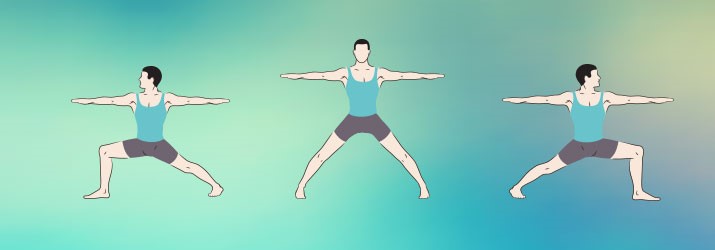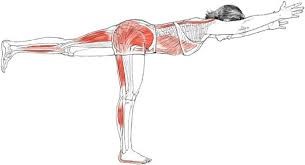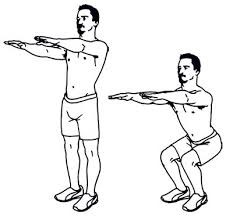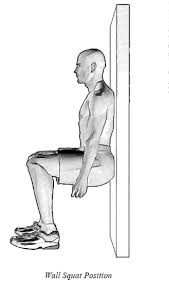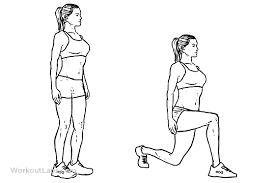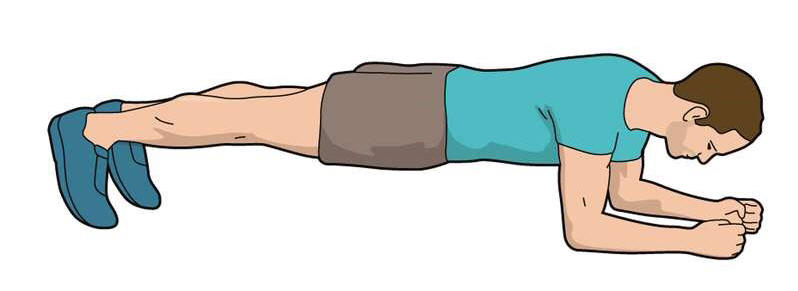
Skiing for adults
Ski lessons for Adults - Morzine
Pietro M. Dalmasso
+33(0)607933550
pietro.dalmasso@monaco.mc
Many people share the same skiing fantasy: they want to set off at the top of the slope at high speed, weaving down the side of the valley, take in some of Morzine's most beautiful sights, their cheeks rosy from the cold, and bask in their sense of complete freedom. Unfortunately, not everyone had the chance to learn to ski as a child.
There is a common misconception that if you learn to ski as an adult, you will never reach the same level as someone who has been carving up the slopes all their life.
Wrong!
Children do learn faster than adults, partially because they are less
fearful and treat skiing like a game.
However, with the right amount
of motivation and positivity, adults can achieve the same results.
Today, more and more people are booking half day/full day ski lessons and weekly courses, and the results are extremely encouraging.
Can I learn to ski as an adult?
As explained above, the answer is yes.
Have you ever noticed how many adults take ski lessons in Morzine?
Over 1/3 of the ski lessons in the Morzine ski resort are attended by adults. Some beginner classes are held on the Hotel Viking field (magic carpet); others on the blue runs that branch off in the direction of Les Gets; while others use the slopes that head downhill into the woods towards the picturesque village of Morzine.
The intermediate classes head towards the upper part of Morzine in search of red runs to refine their technique, while the advanced classes use the black runs to practice short turns or go off-piste in Chamossiere, one of the highest points in the resort, taking advantage of the fresh snow in the freeriding area.
Why not take advantage of the opportunities on offer in Morzine?
Research and studies in the field have shown that skiing progress is determined by three key factors: motivation, physical fitness and preparation.
Even if this is your first snowy getaway, it is good idea to prepare and ensure you are in good physical shape. Otherwise, you should expect to wake up to some serious muscle pain after your first day on the slopes. You can integrate a range of short and easy exercises into your everyday life to improve strength, endurance and balance.
People who exercise throughout the year or play sports regularly will have an easier time skiing and making progress on the slopes of Morzine. If you have any previous joint injuries or physical problems, I recommend consulting a doctor before planning a ski holiday to take ski lessons.
Please let me know about any potential issues so I can adjust your lesson and set goals accordingly.
I recommend taking a ski lesson with a teacher for a couple of days to give skiing a proper chance. Try, learn and enjoy yourself: I'm sure skiing won't disappoint!
Can I learn to ski on my own?
With so many blogs and forums floating around on the internet, a vast array of tips and tricks for learning to ski are just a mouse click away.
I recommend doing some research on techniques and physical preparation before setting off for your holiday in Morzine. However, this information can never replace the advice, tips and observations offered by your ski instructor, who will be by your side throughout your descent.
People who rely exclusively on the internet risk implementing ski techniques in a wrong, harmful and perhaps even dangerous manner. Accidentally pointing your skis directly downhill can cause rapid acceleration, and specific techniques are required to slow down, stop and avoid unpleasant falls, accidents or injuries.
Whether you are travelling with family or friends, ski holidays are typically a group activity. The more experienced members of the group often take it upon themselves to try and teach the beginners. It's a very noble gesture, but your friends will need a great deal of preparation, patience and perseverance.
I often spot beginners on the slopes of Morzine with their husband, wife, partner or sibling in tow, and they rarely seem to be having fun. The atmosphere is tense, fuelled by misunderstandings, demonstration difficulties, and a lack of comprehension regarding the beginner's limitations. I can see the result coming a mile off: the beginner will get upset and give up, while the expert will lose their patience and set off for the most difficult slopes to let off steam.
What a wasted opportunity!
I know all about teaching beginners to ski. After a few minutes of conversation, I know which goals are within the student's reach and can adjust the ski lesson accordingly to ensure quick and easy learning.
I recommend taking a ski lesson with a professional for a minimum of 4 hours a day for the duration of your stay, perhaps with some support from a friend or partner. The instructor will teach you how to ski during your lessons, while your friends can help you practice and go over what you've learned.
If you are planning a week in Morzine with a group of skiers all at different levels, I recommend splitting up for targeted lessons and saving the last day for skiing together. After a week on the snow, the beginners will be able to ski on the blue slopes and the more experienced skiers can take a break to join them for the day.
Private or individual lessons?
Deciding between group ski lessons and a private ski instructor is a matter of taste and budget. Private lessons are the best way to ensure fast progress, as the instructor can give their students a great deal of one-on-one attention.
Shared lessons are naturally cheaper, as the cost is split between several students. The students often bond over their shared experience, chatting and swapping contact details on the chairlift.
Tip: if you and your group of friends are at the same level in terms of skiing skills, whether beginner, intermediate or advanced, it could be a good idea to organise private group lessons.
Not only can you stay with your friends all week, you will also make good progress with your own private ski instructor, who will stay by your side throughout the day.
How long does it take adults to learn to ski?
When it comes to skiing, there is no set timeline.
As explained earlier, the learning process is largely determined by the student's motivation, physical fitness and preparation. Every student is different, with their own unique learning curve.
As a rule, after 2/3 days of lessons a beginner should be able to independently link snowplough turns on the green slopes. After 7 days, the student will typically be able to tackle the blue slopes on their own.
I cannot stress the importance of pre- and post-lesson practice enough. Whether you are a beginner or an expert, putting the concepts learned during your ski lessons into practice will help make your movements more natural and ensure consistent progress.
Ski equipment: rent or buy?
If you are a beginner and you want to learn to ski, you should probably rent your equipment when you get to the Morzine ski resort. The specialist shops there offer excellent quality equipment, updating their ranges regularly to offer safe and cutting-edge products for beginners to experts.
Renting your skis and boots also means that you can request a replacement if you encounter any issues during your first day of skiing in Morzine. The boots you tried on in the warm shop may not feel quite as comfy when you start skiing in freezing temperatures!
Boot problems are extremely common.
Have you ever experienced that deep foot pain that makes you want to take your boots off and throw them on the ground? The Morzine rental shops have the perfect equipment to suit your needs, so you never need to suffer again!
How much time are you planning to spend skiing during the season?
If the answer is more than a week, you should probably buy skis and boots. Having your own boots means you don't have to share with other skiers, and you know they will be comfortable and easy to carry.
When choosing your own equipment, be sure to read up on the latest product innovations. To find the perfect pair of skis, you should consider the following factors: your level (beginner, intermediate or advanced), your ski style, and your budget. Your boots also need to match the level of your skis.
What is the best ski clothing for you?
Before you set off for your next ski holiday in Morzine, take a long hard look at your sportswear. Your experience on the snow should be safe and comfortable, and that means warm, lightweight and breathable clothing. Let's start with underwear: lightweight and breathable thermal pieces will retain your body heat and keep you dry by releasing sweat.
To get the most out of your thermal long johns and top, pair them with a
synthetic second layer, such as a windstopper, soft shell or fleece.
Avoid wool and cotton jumpers. Finally, add a jacket and salopettes with
braces to protect your kidney area.
Your jacket and trousers must be
waterproof.
Each jacket includes a waterproof rating on the label, which is calculated using the water column method. A rating of 5,000 mm or higher (up to 22,000 mm) is a sign of quality waterproofing.
A good jacket must also be breathable in order to release the moisture produced during physical activity. Breathability is expressed in g/m²/day: how many grams of moisture are expelled per square metre of fabric in 24 hours. The higher the value, the more breathable the garment.
Water-repellent, waterproof and breathable jackets are made from specific fabrics/membranes such as Gore-Tex, Hipe, D-Dry, Dermizax, Entrant and Spylon XTI.
To ensure consistent thermal insulation, jackets can be padded with range of different materials. The most common is goose down, which offers impressive thermal properties but retains significant amounts of water vapour and moisture.
I recommend synthetic microfibre padding for exceptional lightness and comfort, even in humid conditions: Polartec, Thermolite, Primaloft and Thinsulate.
Fun fact: to keep your hands and feet warm, you need to cover your
head!
On cold days, your blood flow is directed towards your heart
and brain at the expense of your hands and feet. By keeping your head
warm, you can promote blood flow to your extremities.
Athletic preparation: simple exercises for skiing
You can start skiing at any age, gliding down the side of the valley with the sun on your face, the wind in your hair, zipping from one side of the slope to the other. What fun!
Skiing can stir some strong emotions, whether you are racing down the slope at full speed or slowly taking in the breathtaking views of Morzine. What's more, skiing also offers a range of health benefits, stimulating the cardiovascular and musculoskeletal systems, including your muscles, tendons and ligaments.
Advantages of athletic preparation
Doing a few small and easy physical exercises throughout the year will help you avoid the dreaded third day syndrome: waking up with sore muscles after overexerting yourself on the slopes. The third day is typically when your muscles harden, lose elasticity and start to hurt. Proper athletic preparation prevents pain and strengthens the muscles in a targeted manner, using personalised exercises to minimise the risk of accidents and injuries.
There is no need for a long and complicated exercise plan: as explained below, a few quick exercises will make all the difference.
To stay toned and in shape, I recommend taking up a sport you can play all year round. If that's not quite your speed, doctors and experts suggest that you start preparing 3 months before your ski holiday in Morzine.
Stamina: keep powering on
Skiing is no fun if you can't catch your breath, but good stamina will keep you going the full length of the slope.
In terms of everyday activities, try increasing your walking speed or taking the stairs instead of the lift. The best sports to improve your physical endurance are jogging, swimming, cycling and hiking for 30/60 minutes, 2 or 3 times a week.
I recommend hiking in the mountains: you can train your muscles, tendons and ligaments at the same altitude as a ski slope (or thereabouts).
Stability, coordination and balance
Stability, coordination and balance are equally as important as
stamina.
I see skiers on the snowy slopes of Morzine who seem to have
good physical endurance, but as soon as they hit a mogul, a depression
or a patch of ice, they are thrown off their skis and into the void.
To improve your stability and sense of balance, you can integrate a few simple exercises into your everyday life. For example, you can try standing on one leg while you brush your teeth in the morning. If you're looking for more of a challenge, check out the exercises below to increase your stability, balance and coordination.
Balance: warrior II pose
Borrowed from yoga, the warrior II pose will strengthen your legs and improve your sense of balance and posture. Stand with your back straight, your head looking forwards, and your legs and feet close together. Spread your legs and arms apart with your palms facing the ground.
This pose works and strengthens your quadriceps, making you balance on both feet. Your body weight should be distributed equally between your feet. Rotate your right foot outwards and flex your knee until your thigh is parallel to the floor: support yourself by moving your left foot away in the opposite direction (position 1).
Be sure that your left knee does not go past your ankle after you bend it; if it does, move your foot forwards slightly. Keeping your left leg extended, make sure that your foot is flat against the ground.
Once you are in the correct position, look at your right hand, holding your fingers in a natural position. Align your torso with your neck and imagine your spine gradually stretching. Keep your posture upright.
Return to the starting position with your arms and legs close together, then relax and loosen up (position 2). Repeat the warrior II pose with your left foot rotated (position 3).
Stability: side jumps
Stand up, put your hands on your hips and bend your left leg slightly, but keep your toe touching the ground. Keep your right leg straight to support your body weight, then jump to the right.
Repeat the exercise by jumping to the right another 10 times. Return to the basic position, with your arms at your sides and your legs and feet close together, and relax. Now jump to the left 10 times using your left leg.
Try to limit the number of small steps you take to regain your balance after jumping. This exercise will improve your stability, especially in terms of the axis of the legs.
Coordination: warrior III pose
The warrior III pose is also used in yoga.
This position improves coordination and torso stability. Start in the basic position, with your arms at your sides and your legs and feet close together. Spread your feet until they are aligned with your hips and raise your hands and arms above your shoulders, with your arms touching your ears.
Bend your torso forwards and stretch your left leg backwards to form a 90° angle with your other leg (position 4). The head, neck, arms, spine and extended leg should form a straight line parallel to the floor.
Hold the warrior position for 3 or 4 minutes before returning to the basic position. The exercise should be repeated 10 times per leg.
Muscle strengthening
Good stamina and a sense of balance are a great foundation for your ski trip to Morzine. But if you don't want to end up in pain after your first ski outing, I recommend working on your muscles!
These quick and easy exercises will make a noticeable difference on the slopes, and you can even do them in front of the TV. Skiing uses the following muscle groups: thighs, buttocks, torso and arms. These groups are used differently depending on your technique. For example, if you put a lot of stress on your legs, the less you will need your arms for the poles. Muscle strengthening exercises:
Legs: squats
Stand in the basic position, spread your feet until they are aligned with your hips and stretch your arms forward with the palms of your hands facing down. Shift your hips backwards, bend your knees and lower yourself, without bending your back, until your knees form a 90° angle.
Then return to the starting position. Avoid lowering yourself too quickly and bending your torso too far forwards. If you find this exercise too easy, try Sumo squats, with your feet slightly further apart in the starting position. This alternative stance helps strengthen the inner thighs.
Legs: wall squats
Perform the squat described above using a wall. Rest your back against the wall and lower yourself into a sitting position until your knees form a right angle. Return to the basic position, then repeat the exercise 2 to 4 times.
Leg and torso muscles: leg lunges
Leg lunges tone your thigh and torso muscles and improve your balance. Starting in a basic standing position, move your right leg forwards and focus on your balance. Lower your hips and bend the knee to a 90° angle.
Keep your knee aligned with your ankle and make sure that it does not go past your toes (or ankle). Your back (left) leg should almost be touching the ground. Keep your torso vertical and tensed, without bending forwards. I recommend doing lunges in sets of 4 to 20.
Torso muscles: the plank
Good abdominal and torso muscles are important for skiing and a whole range of everyday activities. As you are winding your way down the slopes of Morzine, your abdominal and back muscles are working to move your pelvis from side to side.
To start the exercise, lie face down on the floor with your feet together. Put your elbows on the floor and raise your pelvis. Only your feet and forearms should be touching the ground. Your legs, hips and head should all be aligned. Avoid raising or lowering your hips past this imaginary line. Stay in position for 60 seconds. Repeat the exercise 3 times.
Villa Joan
11, avenue de l’Hermitage
MC
98000 Monaco
+33 (0) 6 07 93 35 50
+377 92 167 197
pietro.dalmasso@monaco.mc
